Cibola National Forest
- January 30, 2024
- 0 comment
Explore Cibola National Forest’s diverse landscapes, from lush forests to rugged mountains. A haven for outdoor enthusiasts and wildlife. Located in the heart of New Mexico, the Cibola National Forest is a haven for adventurers and nature lovers alike. Explore Cibola National Forest’s diverse landscapes, from rugged mountains to serene woodlands, offering hiking, wildlife, and stunning views.
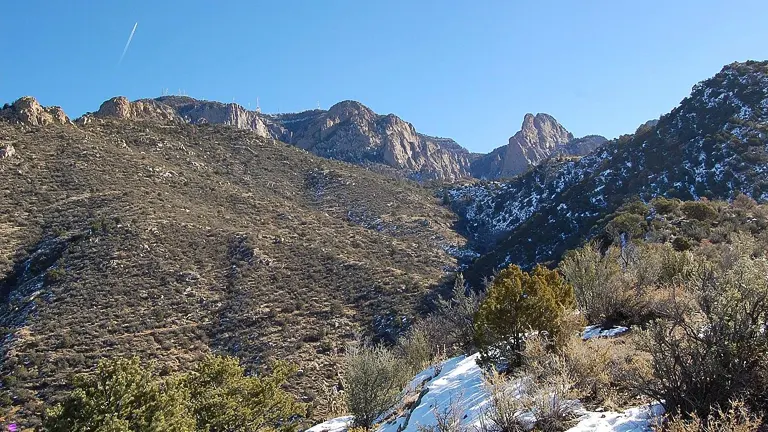
Spanning over 1.6 million acres, this natural gem boasts an array of outdoor activities, including scenic hiking trails, diverse wildlife, and breathtaking panoramic views, making it a must-visit destination for anyone seeking to reconnect with nature.
Characterizing Features of Cibola National Forest
- Diverse Landscapes: Cibola National Forest is characterized by a remarkable variety of landscapes. From the high, rugged peaks of the Sandia Mountains to the vast, rolling grasslands, the forest showcases a spectrum of ecological zones. These contrasting environments provide visitors with an ever-changing backdrop, ranging from dense coniferous forests to open meadows and rocky outcrops.
- Cultural Heritage Sites: The forest is rich in cultural history, evidenced by numerous archaeological sites and ancient petroglyphs. These sites offer a window into the past, revealing the stories and traditions of the Native American tribes that once inhabited the area. The preservation of these sites is crucial for understanding the cultural heritage of the region.
- Climatic Diversity: Spanning a wide range of elevations, Cibola National Forest experiences a mix of climatic conditions. The lower regions have a semi-arid climate, typical of the New Mexico landscape, while the higher elevations experience cooler, more temperate conditions. This climatic diversity contributes to the forest’s varied ecosystems and supports a wide array of flora and fauna.
- Recreational Opportunities: The forest is a haven for outdoor enthusiasts, offering a plethora of recreational activities. From challenging mountain biking trails and backcountry hiking to more leisurely activities like bird-watching and picnicking, Cibola caters to all levels of adventure. Its accessibility makes it a popular destination for both local residents and tourists seeking outdoor experiences.
- Wildlife Habitat: Cibola National Forest serves as a crucial habitat for a variety of wildlife species. The diverse ecosystems within the forest support an array of animals, including elk, deer, and black bears, as well as a multitude of bird species. Conservation efforts in the forest aim to protect these wildlife populations and their habitats, ensuring the ecological integrity of the region.
- Water Resources: The forest contains several vital water sources, including streams and lakes, which are essential for the survival of the forest’s ecosystems. These water bodies not only support wildlife but also provide recreational activities such as fishing and boating. The management of these resources is critical for maintaining the health of the forest and the species that depend on it.
The origins of Cibola National Forest trace back to the early 20th century, rooted in the broader context of American conservation history. Officially established in 1908 under the administration of President Theodore Roosevelt, the forest was part of a nationwide movement to preserve and manage public lands for future generations. Initially, Cibola was smaller, encompassing what is now known as the Datil, Gallinas, Bear, and Zuni Mountains, along with the Sandia and Manzano Ranges. The name “Cibola” itself is steeped in history, derived from the legendary Seven Cities of Cíbola, which were fabled to be rich in gold and sought by Spanish explorers in the 16th century. This historical nomenclature not only honors the region’s past but also underscores the forest’s mystique and allure.
History of Cibola National Forest
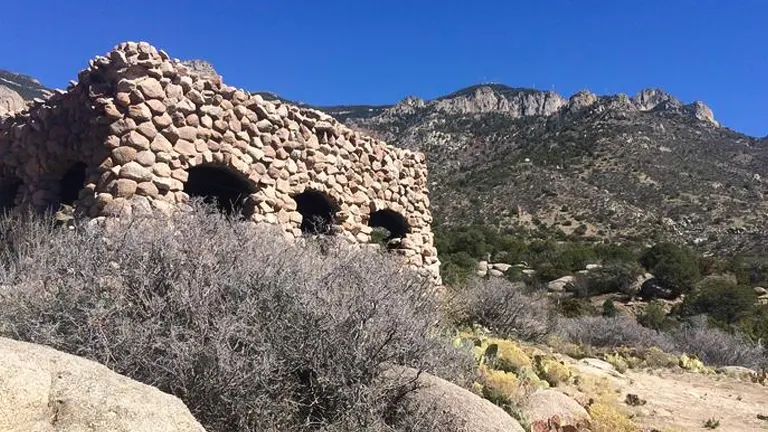
Over the years, Cibola National Forest has undergone significant changes, both in its geographical boundaries and its management practices. The forest expanded through several additions, including the acquisition of other forest reserves and public lands, leading to its current size and shape. The U.S. Forest Service, responsible for the management of Cibola, has continuously adapted its strategies to address evolving environmental challenges, such as wildfire management, habitat conservation, and sustainable resource use. The forest’s history is also marked by its cultural significance, serving as a site for traditional uses by indigenous peoples, and later, for recreational and educational purposes by the wider public. Today, Cibola stands not only as a testament to the foresight of early conservationists but also as a dynamic landscape that continues to evolve and adapt in the face of 21st-century environmental challenges.
Unique Ecosystem of Cibola National Forest
The Cibola National Forest boasts a unique and complex ecosystem, a tapestry woven with diverse ecological zones due to its wide range of elevations and varied climatic conditions. This vast area, extending over 1.6 million acres, encompasses ecosystems ranging from the Chihuahuan Desert’s arid grasslands at lower elevations to the subalpine coniferous forests at higher altitudes. Such ecological diversity supports a remarkable variety of plant and animal species, adapted to thrive in conditions from dry, sun-bathed plains to cool, moisture-rich mountainous areas.
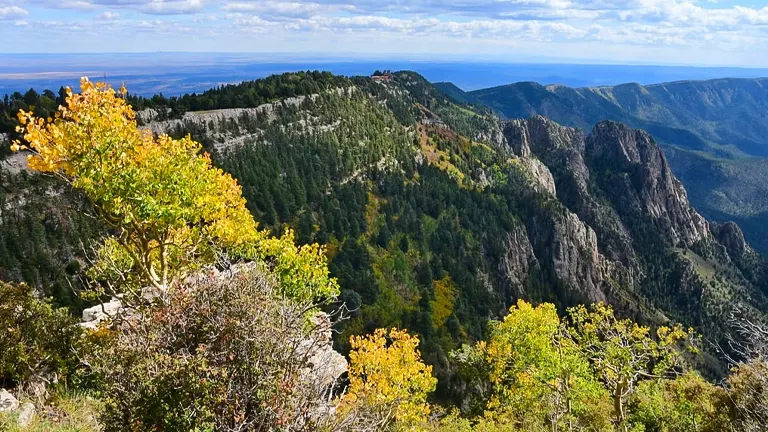
The forest’s ecosystem is a critical habitat for several endangered and endemic species, making it an important focus for ecological research and conservation efforts. This intricate interplay of flora and fauna, climate, and geography not only defines the ecological uniqueness of Cibola National Forest but also underscores its significance as a natural reservoir of biodiversity in the American Southwest.
Location of Cibola National Forest
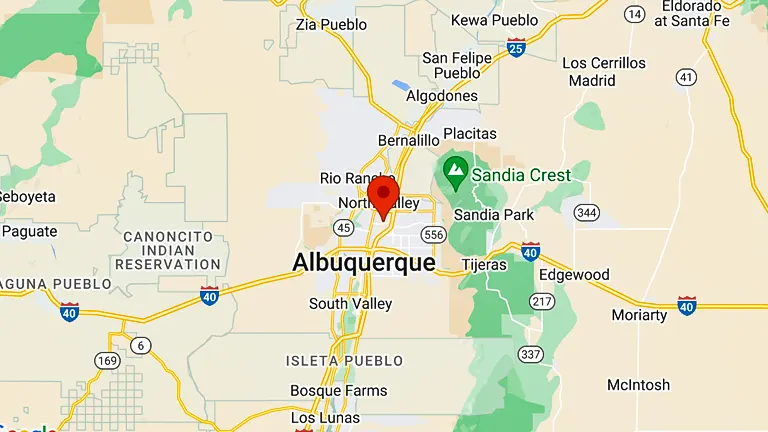
Cibola National Forest is strategically located in central New Mexico. Spanning across several counties, it’s easily accessible from Albuquerque, the state’s largest city. The forest’s diverse terrain extends into parts of the Sandia, Manzano, and Gallinas Mountains, offering a quick escape to nature for urban residents. Its proximity to the historic Route 66 adds to its allure for travelers.
Guide on How to Access Cibola National Forest:
1. By Air:
- The nearest major airport is Albuquerque International Sunport (ABQ), located about 20 miles from the forest.
- From the airport, you can rent a car or use shuttle services to reach the forest.
- For international travelers, connecting flights to Albuquerque are available from major U.S. cities.
2. By Car from Albuquerque (Sandia Ranger District):
- Take Interstate 40 (I-40) East from Albuquerque.
- Exit on NM-14 (Cedar Crest) and head north.
- Follow NM-536, which leads directly into the Sandia Ranger District.
3. Accessing the Mountainair Ranger District:
- From Albuquerque, take I-40 East.
- Exit south on US-60 toward Mountainair.
- Follow signage to the Mountainair Ranger District.
4. Using Public Transportation:
- Public transportation options are limited. However, some bus services from Albuquerque may get you close to the forest boundaries.
- Check the latest schedules and routes of ABQ RIDE (Albuquerque’s public transit system).
5. For Hikers and Bikers:
- The Paseo del Bosque Trail in Albuquerque is a popular starting point for cyclists.
- Hikers can access various trailheads along NM-14 and NM-536.
6. Seasonal Access Considerations:
- Some parts of the forest, especially higher elevations, may be inaccessible during winter due to snow.
- Always check the current road conditions and weather forecasts before planning your trip.
7. Accommodation Nearby:
- There are numerous hotels and lodgings in Albuquerque for those who wish to stay overnight before heading to the forest.
- Camping in the forest is also an option but requires preparation and adherence to forest guidelines.
8. Guided Tours:
- Consider booking a guided tour, especially if you are unfamiliar with the area. Local tour operators offer various packages, including hikes, wildlife viewing, and cultural tours.
The Importance of Conservation and Recreation in Cibola National Forest
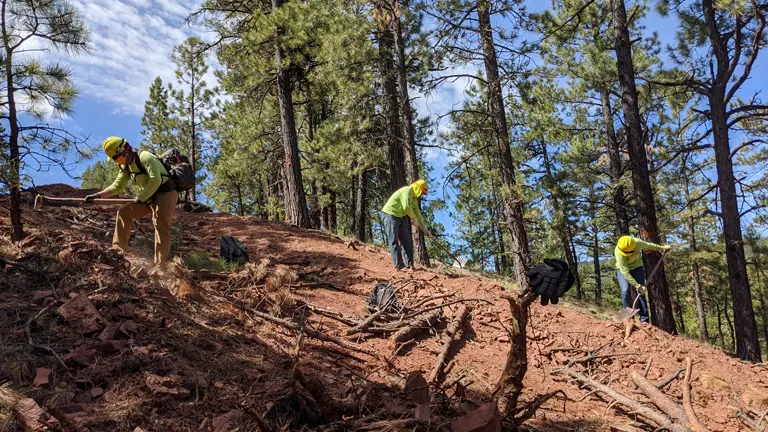
In Cibola National Forest, the symbiosis between conservation and recreation forms the cornerstone of its management and visitor experience. Conservation efforts are crucial in preserving the forest’s diverse ecosystems, which are home to numerous endemic and endangered species, and in maintaining the natural beauty and ecological balance of this unique landscape. These efforts include habitat restoration, wildfire prevention, and the protection of cultural heritage sites. Concurrently, recreational activities like hiking, camping, and wildlife observation are not only pivotal for the local economy but also play a vital role in fostering environmental stewardship among visitors. By experiencing the forest’s natural wonders firsthand, visitors develop a deeper appreciation and understanding of the need for conservation. This dual focus ensures that Cibola National Forest continues to thrive as a dynamic, living ecosystem, providing invaluable environmental, educational, and recreational benefits for current and future generations.
Diverse Vegetation and Plant Species in Cibola National Forest
- Ponderosa Pine (Pinus ponderosa): Dominating the higher elevations of the forest, Ponderosa Pines are iconic with their tall, straight trunks and distinctive orange-brown bark. They play a crucial role in the forest’s ecosystem, providing habitat for wildlife and contributing to the soil’s nutrient cycle.
- Gambel Oak (Quercus gambelii): These oaks are commonly found in the forest’s mid-elevations. They are an essential source of food for wildlife, especially their acorns, and contribute to soil stability and water retention.
- Douglas Fir (Pseudotsuga menziesii): Located in the cooler, moist areas of the forest, Douglas Firs are vital for maintaining the forest’s biodiversity. Their dense foliage offers shelter for various bird species and other wildlife.
- Alligator Juniper (Juniperus deppeana): Easily recognizable by its alligator-like bark, this juniper species is a hardy plant that thrives in the forest’s lower and drier zones. It’s important for erosion control and provides habitat and food for wildlife.
- Southwestern White Pine (Pinus strobiformis): Found in the higher, cooler areas, these trees add to the forest’s diversity. They are known for their long, soft needles and are a critical habitat for many bird species.
- Blue Grama Grass (Bouteloua gracilis): This native grass species is predominant in the forest’s grassland areas. It’s a key species for soil health and is used for grazing by wildlife and livestock.
- New Mexico Locust (Robinia neomexicana): Recognizable by its bright pink flowers, this shrub or small tree is important for nitrogen fixation, which enriches the soil. It’s often found in disturbed areas, helping in the recovery of ecosystems.
- Aspen (Populus tremuloides): Known for their striking golden-yellow leaves in the fall, aspens are most common in the cooler, higher elevations. They are important for biodiversity, providing habitat for various fauna, and are a popular aesthetic feature for visitors.
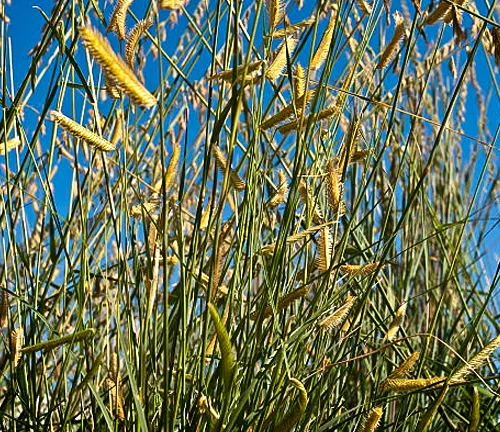
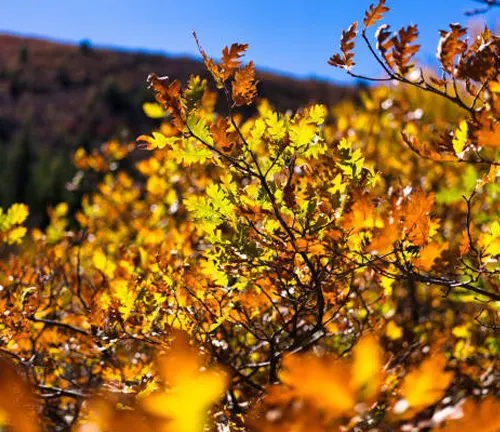
Fauna in Cibola National Forest
- Mexican Spotted Owl (Strix occidentalis lucida): This species is one of the forest’s most iconic and sensitive inhabitants. As a threatened species, the Mexican Spotted Owl relies on the old-growth forests within Cibola for nesting and hunting, making their conservation a priority in the region.
- Elk (Cervus canadensis): The majestic elk are a common sight in the open meadows and grasslands of Cibola. They play a vital role in the ecosystem as grazers, influencing the vegetation dynamics and serving as a key food source for predators.
- Mountain Lion (Puma concolor): As top predators, mountain lions are essential for maintaining the balance of the forest’s ecosystem. Their presence is indicative of a healthy, intact environment, and they contribute to controlling the populations of other species.
- Black Bear (Ursus americanus): Black bears, though elusive, are an important part of the forest’s biodiversity. They are omnivores and play a significant role in seed dispersal and in maintaining the balance of various food webs.
- Mule Deer (Odocoileus hemionus): These deer are well-adapted to the diverse habitats of Cibola, from arid lowlands to mountainous regions. They are a crucial prey species for larger predators and play a role in shaping plant communities through grazing.
- Peregrine Falcon (Falco peregrinus): Known for their incredible speed and hunting prowess, Peregrine Falcons are thrilling to observe for bird watchers. They nest on cliff faces and hunt in open areas, contributing to the control of small bird and rodent populations.
- Gila Trout (Oncorhynchus gilae): Found in the streams and rivers of Cibola, the Gila Trout is a species of concern, mainly due to habitat loss and competition with non-native fish species. Efforts to conserve and restore their habitat are crucial for their survival.
- Abert’s Squirrel (Sciurus aberti): Unique to the southwestern United States, Abert’s Squirrel is particularly known for its long tufted ears. These squirrels are dependent on Ponderosa Pine forests and play a role in seed dispersal and forest regeneration.
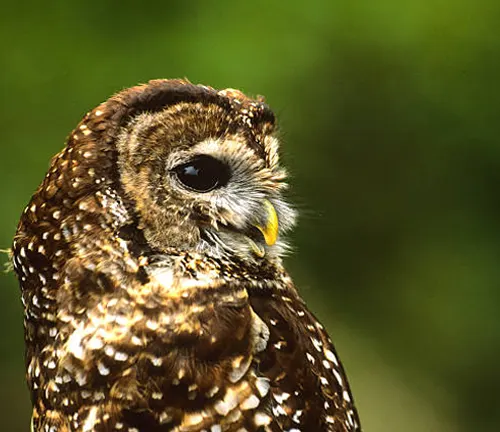
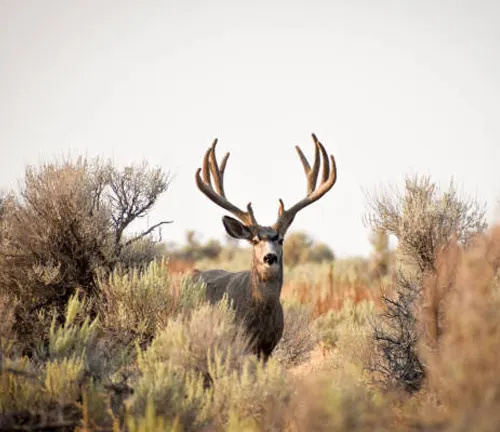
Different Attractions in Cibola National Forest
Sandia Peak Tramway: The Sandia Peak Tramway offers a breathtaking journey to the crest of the majestic Sandia Mountains. As one of the longest aerial trams in North America, it provides stunning panoramic views of the Cibola National Forest and Albuquerque below. At the top, visitors can enjoy hiking, dining at the High Finance Restaurant, or simply revel in the vastness of the surrounding landscape.
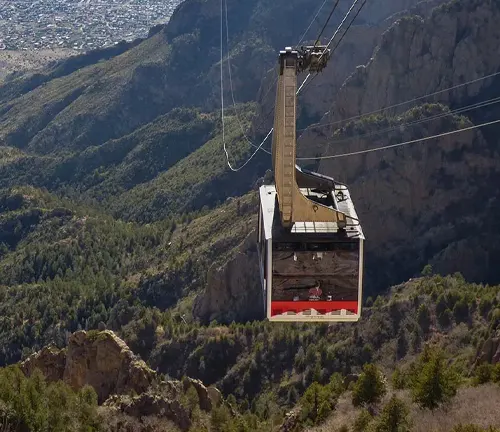
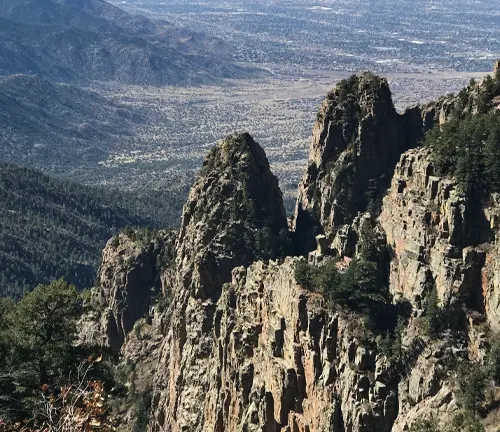
La Luz Trail: A favorite among hiking enthusiasts, the La Luz Trail presents a challenging but rewarding trek. The trail climbs the west face of the Sandia Mountains, offering diverse terrains and spectacular views. Hikers on this trail experience a microcosm of Cibola’s diverse ecosystems, transitioning from desert scrubland at the base to alpine forest at higher elevations.
Fourth of July Canyon: Named for its spectacular display of autumn colors that rival any fireworks show, Fourth of July Canyon is particularly popular in the fall. The contrast of golden aspen trees against evergreens creates a stunning visual spectacle, drawing photographers and nature lovers alike. It’s a perfect spot for a serene nature walk or a family picnic.
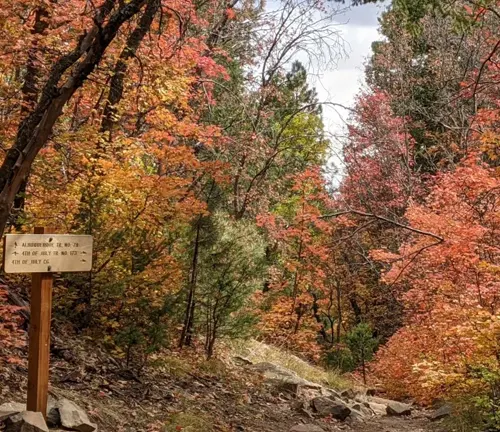
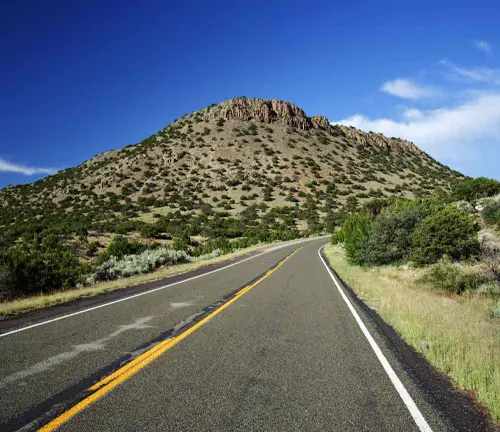
Turquoise Trail National Scenic Byway: Connecting Albuquerque and Santa Fe, this scenic route runs through parts of the Cibola National Forest. It offers a delightful drive with picturesque views, unique geological features, and a glimpse into the region’s rich mining history. Along the way, travelers can explore historic towns, art galleries, and local eateries.
Tijeras Pueblo Archaeological Site: This site offers a glimpse into the life of the Ancestral Pueblo people who inhabited the area over 700 years ago. Visitors can explore the remains of the ancient pueblo, learn about the lifestyle and culture of its inhabitants, and understand the historical significance of the region.
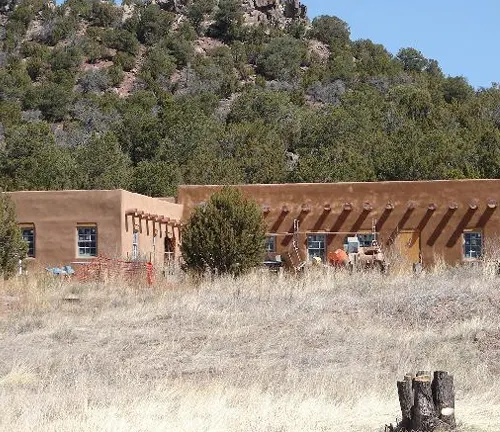
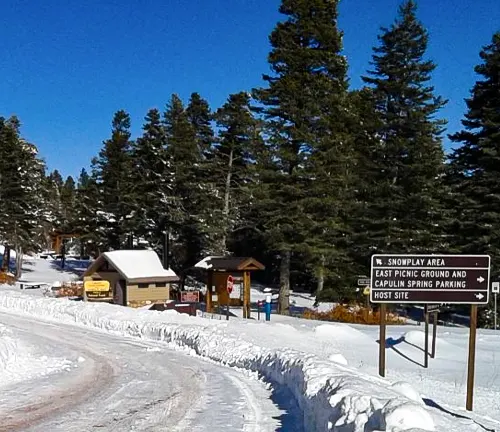
Capulin Snow Play Area: In the winter, the Capulin area turns into a popular destination for snow activities. Families and winter sports enthusiasts enjoy sledding, snowshoeing, and cross-country skiing, making it a versatile attraction for all ages looking to enjoy the snow-covered landscape of Cibola.
Manzano Mountains State Park: Located within the Cibola National Forest, this state park offers a quieter, more secluded experience. It’s an ideal spot for camping, bird watching, and hiking, with several trails meandering through the beautiful forested landscape, showcasing the tranquility and natural beauty of the region.

Recreational Activities in Cibola National Forest
- Hiking: Cibola National Forest offers an extensive network of hiking trails, catering to all skill levels. From the challenging La Luz Trail to more leisurely paths like the Tree Spring Trail, each hike offers a unique experience of the forest’s diverse landscapes. These trails provide an opportunity to observe the local flora and fauna, enjoy scenic vistas, and experience the tranquility of nature.
- Mountain Biking: For mountain biking enthusiasts, Cibola presents a range of trails offering varying degrees of difficulty and terrain. The Cedar Crest area, for example, has become a hub for mountain bikers, with trails that navigate through dense forests and open meadows, challenging riders with their elevation changes and natural obstacles.
- Camping: With numerous designated campgrounds and backcountry areas, camping in Cibola National Forest is a popular activity. Whether it’s a traditional tent camping experience at the Red Canyon Campground or a more secluded backcountry adventure, camping here allows visitors to immerse themselves fully in the natural beauty and serenity of the forest.
- Wildlife Viewing and Bird Watching: The forest’s diverse ecosystems make it an ideal location for wildlife viewing and bird watching. Species like the Mexican Spotted Owl, elk, and mule deer can be observed in their natural habitat. Bird enthusiasts can spot a variety of species, particularly in areas like the Sandia Mountains, where the mix of elevations creates a haven for different bird species.
- Fishing: Anglers will find several streams and lakes in Cibola National Forest stocked with a variety of fish species, including trout. Popular spots like the Jemez Springs area provide serene and scenic settings for both fly fishing and traditional angling, offering a peaceful retreat for fishing enthusiasts.
- Winter Sports: In the winter months, the forest transforms into a playground for snow sports. The Capulin Snow Play Area, for instance, becomes a popular spot for sledding, while other areas of the forest offer opportunities for cross-country skiing and snowshoeing. The snow-covered landscape provides a different perspective of the forest’s beauty.
- Picnicking: For those seeking a more relaxed visit, the forest offers several picnic areas. These sites, like the Doc Long Picnic Area in the Sandia Mountains, provide the perfect setting for a family outing or a peaceful day under the trees, complete with facilities like grills and picnic tables.
- Horseback Riding: Equestrian enthusiasts can explore designated trails on horseback, experiencing the forest’s natural beauty from a different vantage point. The trails are designed to accommodate riders of various skill levels, allowing for a leisurely ride through meadows or a more challenging journey through mountainous terrain.
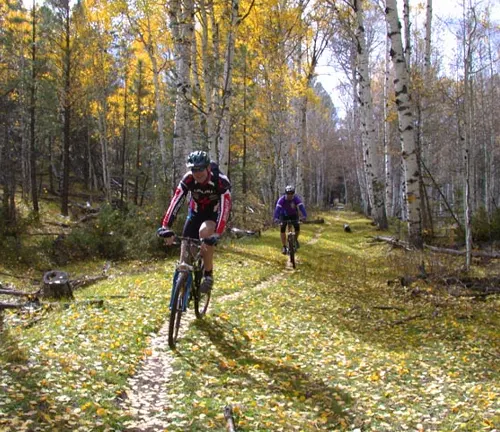

Different Facilities and Amenities in Cibola National Forest
- Campgrounds: Cibola National Forest is equipped with several campgrounds, such as the Tajique Campground in the Manzano Mountains and the Black Bear Campground near the Sandia Mountains. These facilities offer a range of amenities, including picnic tables, fire pits, and restroom facilities, catering to both tent and RV campers. The campgrounds are designed to provide a comfortable and enjoyable outdoor experience, allowing visitors to fully immerse themselves in the forest’s natural beauty.
- Picnic Areas: The forest features numerous picnic areas, like the Cedro Peak and Nine Mile Picnic Areas. These spots are ideal for day visitors looking to enjoy a meal in the great outdoors. They are equipped with tables, grills, and often have restroom facilities nearby. Some picnic areas also have playgrounds, making them perfect for family outings.
- Visitor Centers: Visitor centers, such as the Sandia Ranger District Office, offer valuable resources for visitors. Here, guests can find maps, brochures, and information about the forest’s trails, wildlife, and history. The staff at these centers can provide insights, safety information, and recommendations to enhance the visitor experience.
- Trails for Various Activities: The forest boasts a vast network of trails for hiking, mountain biking, horseback riding, and in some areas, off-road vehicle use. These trails are well-maintained and marked, catering to different skill levels and interests. They are the gateways to exploring the forest’s diverse landscapes and ecosystems.
- Wildlife Viewing Stations: In areas known for their wildlife, such as near the Big Springs, the forest has established viewing stations. These spots are strategically located to offer the best chances of observing wildlife in their natural habitat, with minimal disturbance to the animals.
- Fishing Access Points: For anglers, the forest provides access points to various streams and lakes, such as the Jemez River and Fenton Lake. These areas are often stocked with fish and are equipped with basic amenities like parking and signage, making them accessible and enjoyable for fishing enthusiasts.
- Winter Sports Facilities: In the colder months, certain areas of the forest, like the Capulin Snow Play Area, are equipped for winter sports. These facilities may include maintained trails for cross-country skiing and snowshoeing, as well as open areas for sledding and snow play.
- Educational Programs and Guided Tours: The forest occasionally offers educational programs and guided tours, focusing on the ecology, history, and conservation efforts in the region. These programs are a great way for visitors, especially families and school groups, to learn about the forest in an interactive and engaging manner.
Tips and Advice for Visiting Cibola National Forest
- Check Weather and Road Conditions: Before heading to Cibola National Forest, it’s crucial to check the latest weather forecasts and road conditions. The forest spans a wide range of elevations, leading to varied weather patterns, especially in transitional seasons. Additionally, some roads may be closed or difficult to navigate due to snow, rain, or maintenance, particularly in remote areas.
- Adhere to Leave No Trace Principles: To preserve the beauty and ecological integrity of the forest, visitors should follow the Leave No Trace principles. This includes packing out all trash, staying on designated trails to prevent erosion, and avoiding disturbing wildlife or natural habitats. Respecting these guidelines ensures that the forest remains pristine for future visitors and wildlife.
- Prepare for Wildlife Encounters: Given the diversity of wildlife in Cibola National Forest, it’s important to know how to safely observe and interact with animals. Keep a safe distance from all wildlife, never feed animals, and store food securely to avoid attracting bears and other wildlife to your campsite.
- Bring Adequate Supplies: When visiting, especially in more remote areas, ensure you have sufficient water, food, and basic first-aid supplies. Cell phone reception can be unreliable in the forest, so prepare for limited communication and bring a map or GPS device for navigation.
- Respect Fire Regulations: Fire danger can vary greatly throughout the year. Always check and adhere to current fire regulations and restrictions, which may include bans on open fires or requirements for camp stove use. Preventing wildfires is a critical aspect of forest safety and conservation.
- Dress Appropriately: Due to the range of elevations and environments in the forest, dressing in layers is advisable. Weather can change rapidly, especially in higher elevations, so be prepared with rain gear and appropriate footwear for rugged terrain.
- Be Mindful of Altitude: Some areas of the forest, particularly the Sandia and Manzano Mountains, are at high elevation. Visitors, especially those not accustomed to high altitudes, should acclimate slowly to prevent altitude sickness and drink plenty of water to stay hydrated.
- Plan Your Activities According to Your Abilities: With a wide array of recreational activities available, choose those that match your skill level and experience. Whether it’s hiking, biking, or winter sports, understanding your limits and planning accordingly ensures a safer and more enjoyable experience.
Recommendation
Seeking a mix of tranquility and adventure? Cibola National Forest is your go-to destination. With its stunning landscapes, from desert plains to mountainous terrains, it offers a range of activities for all. Ideal for hikers, wildlife enthusiasts, or those seeking a peaceful retreat, its rich ecosystems and cultural history are captivating. Explore this hidden gem, reconnect with nature, and make unforgettable memories in the great outdoors!
Conclusion
Cibola National Forest is a remarkable blend of natural beauty, diverse ecosystems, and rich cultural history. With its stunning landscapes, ranging from rugged mountains to serene woodlands, and an array of recreational activities, it offers something for everyone. As a haven for wildlife, a hub for outdoor enthusiasts, and a source of natural tranquility, Cibola is not just a destination but an experience that captivates and rejuvenates the soul. This forest embodies the essence of nature’s majesty and stands as a reminder of the value and beauty of the natural world.
FAQs
- What is the best time of year to visit Cibola National Forest?
The ideal time to visit is spring and fall when the weather is mild, and the natural beauty is at its peak. Spring offers wildflower blooms, while fall showcases stunning autumn foliage. - Are there any entrance fees for Cibola National Forest?
Most areas of the forest do not require an entrance fee. However, certain specialized facilities or activities, like the Sandia Peak Tramway, may have fees. - Can I bring my dog to Cibola National Forest?
Yes, dogs are welcome but must be kept on a leash in most areas to protect wildlife and ensure the safety of all visitors. - Is Cibola National Forest suitable for family trips?
Absolutely! The forest offers various family-friendly activities, including easy hiking trails, picnic areas, and educational programs at visitor centers. - Are there camping facilities available in the forest?
Yes, there are numerous campgrounds with varying levels of amenities. It’s advisable to check availability and any specific rules or restrictions beforehand. - What should I bring for a day hike in Cibola National Forest?
Essential items include water, snacks, a map or GPS, appropriate clothing for the weather, a first-aid kit, and sun protection. - Is it possible to see wildlife in the forest? What kinds might I see?
Yes, wildlife viewing is a popular activity. You might see elk, mule deer, black bears, various bird species, and if you’re lucky, the elusive Mexican Spotted Owl. - Are there any guided tours available in Cibola National Forest?
Guided tours are occasionally available, particularly for educational purposes. Contact the forest’s visitor centers for the most current information on guided tours and educational programs.
In the heart of New Mexico lies the Cibola National Forest, a natural sanctuary offering a blend of adventure, tranquility, and a deep connection with the earth’s beauty. Whether you’re a hiker, a historian, or simply a lover of nature, Cibola welcomes you to explore its wonders and leave with unforgettable memories.


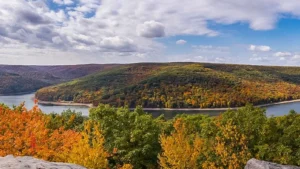

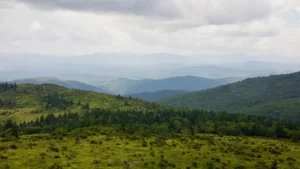
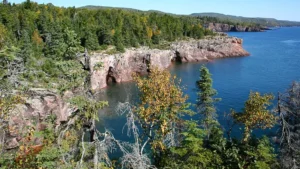

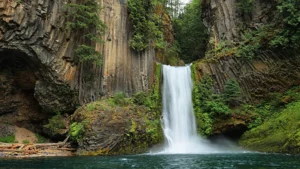
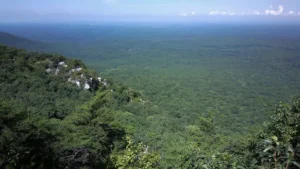

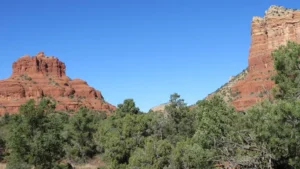
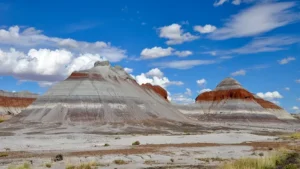
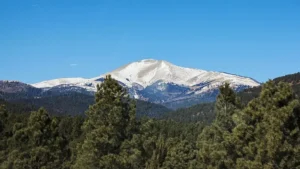

Leave your comment